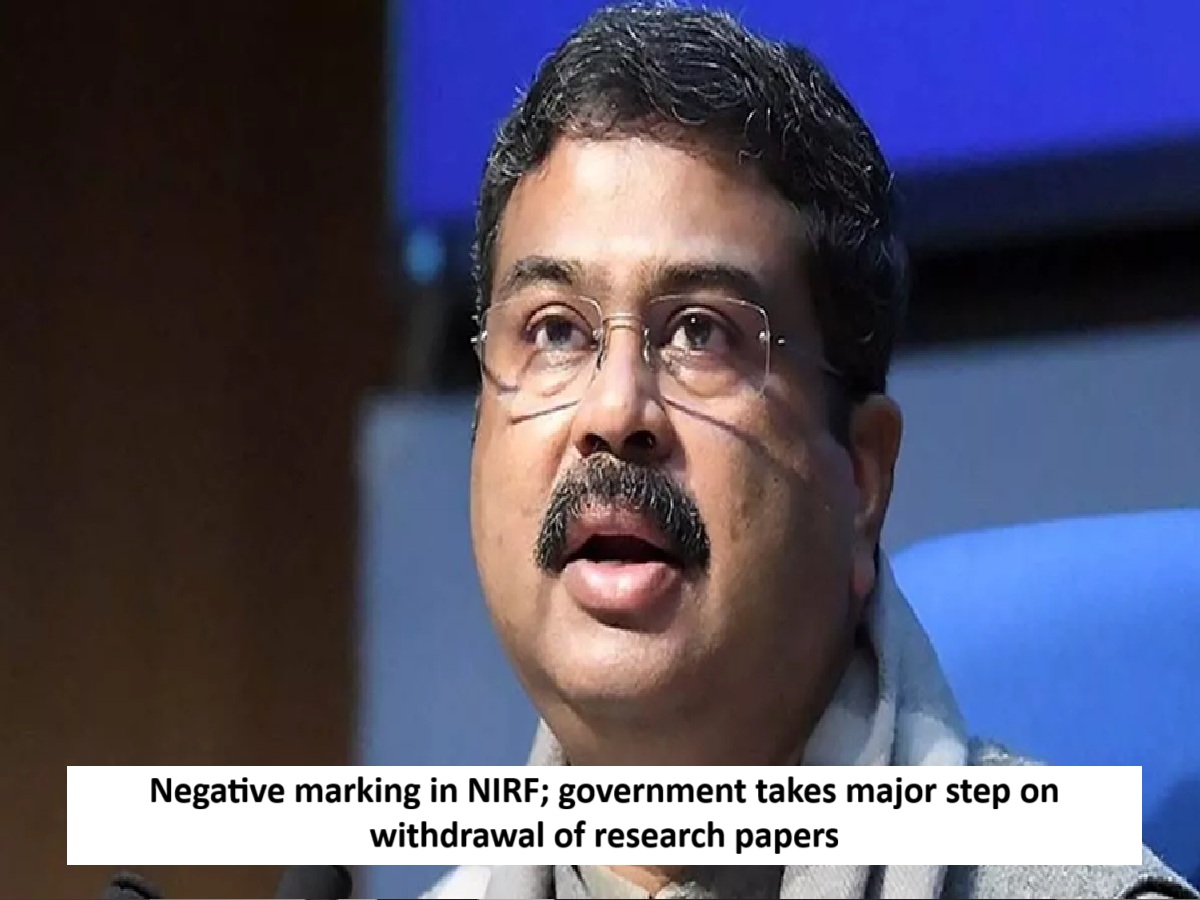
News Topical, Digital Desk : The National Institutional Ranking Framework (NIRF) will soon introduce negative marking for several criteria, including retracted research papers and citations from poorly-researched papers. Education Minister Dharmendra Pradhan announced the tenth edition of NIRF. Since its inception, NIRF has never had negative marking.
"For the first time, penalties are being formally incorporated into the ranking methodology to take action against improper research methods and misrepresentation of data. The negative marking system will be announced soon, and draft criteria are being prepared," said Anil Sahasrabuddhe, chairman of the National Accreditation Board (NBA), the agency that manages NIRF.
Why was there a need for negative marking?
He said that many institutions have been withdrawing a large number of research papers for the past two to three years. The credibility of these institutions is an issue. Unless we give negative marks, people will not correct this. NIRF evaluates educational institutions based on five broad criteria: learning and teaching, graduate outcomes, research, access, and perception.
With over 8,700 institutions participating in 2024, its results have become a widely used reference metric for students, employers, and policymakers. Rankings like QS, Times Higher Education, and NIRF do not factor in the withdrawal of research papers for scoring, allowing these institutions to thrive despite the alarming number of withdrawals from their research departments.
The matter reached the High Court
This issue was also highlighted in a public interest litigation filed in the Madras High Court in April. It questioned the transparency of ranking systems like the NIRF. The petition argued that the NIRF rankings are calculated solely based on data provided by educational institutions on their websites, without any verification or auditing.
The court subsequently imposed an interim stay on the rankings, which was lifted after the Centre intervened, stating that the publication of the NIRF ranking list follows a "scientific methodology" prescribed by an expert body.
--Advertisement--

 Share
Share



